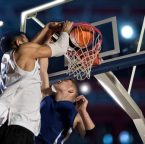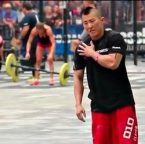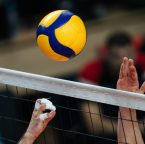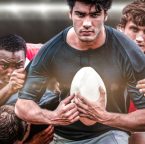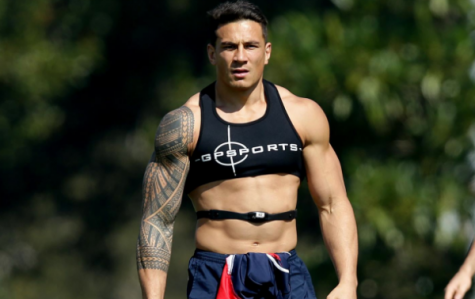If you want to dominate the court you need to have basketball skills and talent.
That will only take you so far, though. If you are slow and can’t jump and are just a weakling in general then you will have a tough time reaching your full potential.
Below are the best exercises for basketball players that will help you dominate the way you should.
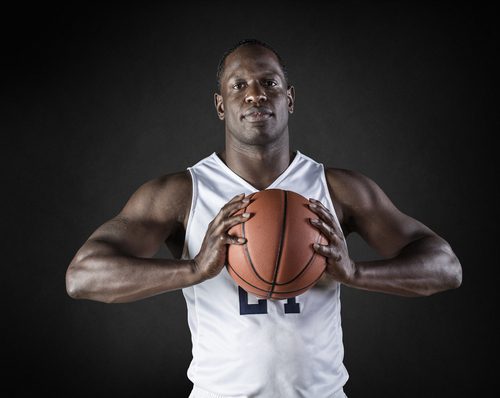
10 Best Exercises for Basketball Players
These are the best exercises that will help you reach your full potential as a basketball player.
Jump Squats
Newsflash: basketball players jump a lot. If you want to get a rebound or hit a jump shot, you’ll need to be able to jump, and the higher you jump, the better. That’s why incorporating jump squats into your training routine can be a game-changer for basketball players.
Jump squats are a powerful exercise that targets multiple muscle groups, including the quadriceps, hamstrings, glutes, and calves. By performing explosive jumps, you’re not only building lower body strength but also developing muscular power and increasing your vertical leap.
How to perform jump squats:
- Stand with feet shoulder-width apart, toes slightly pointed outward.
- Lower into a squat position, thighs parallel to the ground.
- Explode up, extending legs and swinging arms upward.
- Land softly, bending knees and hips to absorb the impact.
- Repeat the motion in a fluid and continuous manner.
Lunges
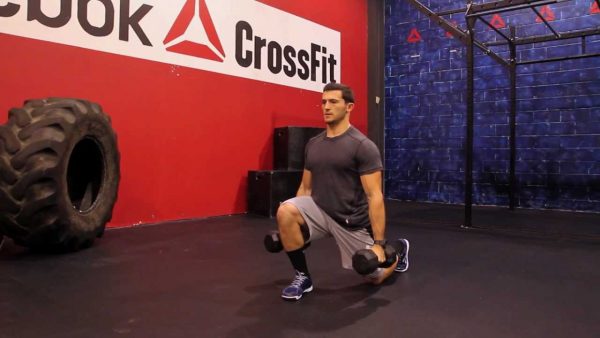
Lunges are another exercise that is mandatory for anyone who plays basketball. Just think about how often you find yourself in a lunge position during games, with one leg forward and one leg back. That’s why incorporating lunges into your training routine can have a significant impact on your performance on the court. Lunges help you build strength, power and stability from this position.
Additionally, they help prevent injuries by strengthening the muscles around the knees, ankles, and hips. By mimicking basketball-specific movements, lunges train the body for game actions like driving to the basket and shooting. Core activation during lunges further enhances stability.
How to Perform Lunges
- Stand with your feet hip-width apart.
- Take a step forward with one leg, lowering your body until both knees are bent at a 90-degree angle.
- Keep your front knee directly above your ankle and ensure your back knee is parallel to the ground.
- Push through your front heel to return to the starting position.
- Repeat with the other leg by stepping forward and bending both knees.
- Continue alternating legs for the desired number of repetitions.
- Maintain an upright posture throughout the exercise.
You can also perform this exercise with a dumbbell in each hand once you get stronger and your own bodyweight becomes too easy.
Plyometric Push-Ups
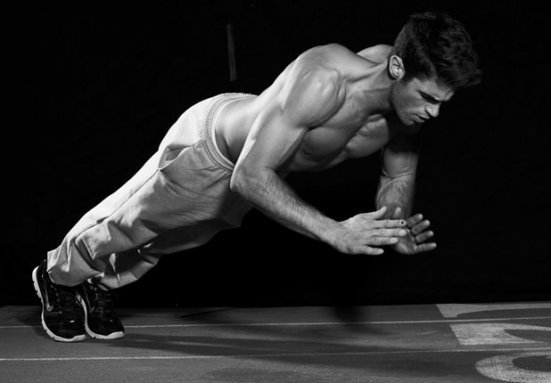
Our first two exercises have focused on the lower body, but now it’s time to shift our attention to the upper body. Basketball players should prioritize incorporating plyometric push-ups into their training routine. These exercises offer numerous benefits specifically tailored to enhance performance on the court, particularly in situations where upper body strength is crucial.
One key aspect of basketball is the physicality involved in rebounding, fighting for loose balls, and making quick passes or dribbles through traffic. Plyometric push-ups help develop the necessary upper body strength to excel in these scenarios. By engaging the chest, shoulders, and triceps muscles, plyometric push-ups improve upper body power, allowing players to generate more force during game actions.
The explosive nature of plyometric push-ups also enhances reactive strength, which is essential for absorbing impact and quickly responding with explosive movements. This is particularly valuable when battling for rebounds or contending for a shot contest. Plyometric push-ups train the muscles to react rapidly and generate force in a short amount of time, improving the ability to react and perform in high-intensity situations on the court.
How to Perform Plyometric Push-Ups
- Start in a traditional push-up position with your hands slightly wider than shoulder-width apart and your body in a straight line from head to toe.
- Lower your chest toward the ground by bending your elbows, keeping them at a 45-degree angle to your body.
- Push explosively through your hands, propelling your upper body off the ground.
- In mid-air, quickly bring your hands back to the starting position, ready to absorb the impact.
- Land softly with your elbows slightly bent to cushion the landing.
- Immediately go into the next repetition, repeating the explosive push-off and soft landing.
- Keep your core engaged and maintain proper form throughout the exercise.
Lateral Bounds
This exercise may sound funny and might even look funny, but it will help you in the sport of basketball.
Here’s why basketball players should incorporate lateral bounds into their training routine:
Lateral bounds help improve lateral explosiveness and agility. Basketball requires quick lateral movements such as defending against opponents, changing directions while dribbling, and sliding to cover defensive positions. By performing lateral bounds, players can develop the necessary strength and power in their legs to execute these movements with speed and precision.
This exercise also enhances lower body strength and stability. The exercise targets the muscles in the lower body, including the glutes, quadriceps, and calves. Strengthening these muscles improves stability, balance, and overall body control, which are crucial for executing swift lateral movements without losing control or balance.
Lateral bounds also improve proprioception and body awareness. Proprioception refers to the body’s ability to sense its position and movement in space. By practicing lateral bounds, players enhance their proprioceptive abilities, which helps them maintain spatial awareness during quick lateral movements on the court. This is something you don’t really realize that you need unless they don’t have it.
How Yo Perform Lateral Bounds:
- Start in an athletic stance with your feet shoulder-width apart, knees slightly bent, and core engaged.
- Take a lateral hop to the side, pushing off with one foot and landing on the opposite foot.
- As you land, absorb the impact by bending your knees and maintaining balance.
- Immediately explode back in the opposite direction, pushing off with the landing foot and landing on the other foot.
- Continue alternating lateral bounds, focusing on explosive and controlled movements.
- Maintain proper form throughout, keeping your chest up, shoulders back, and eyes forward.
- Use your arms to generate momentum and aid in the lateral movement.
- Start with smaller hops and gradually increase the distance and intensity as you become more comfortable and proficient.
You may look a little silly doing lateral bounds but they will pay off.
Med Ball Throws
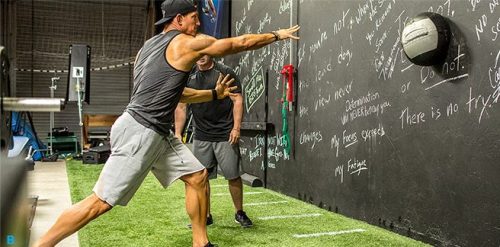
Med ball throws, and slams are among the best ways for athletes to increase power.
Many athletes use Olympic lifts like snatches and power cleans to build power and explosiveness. There is a problem with Olympic lifts, though. They are hard to learn and perform correctly.
That’s where med ball throws come in, med ball throws mimic the Olympic lift exercises, but they are much easier to learn and are quite a bit safer than Olympic lifts.
Medicine ball training encompasses speed, power, and accuracy, making it a dynamic and fast-paced exercise. These three aspects are crucial in various athletic sports and physical training. By engaging in med ball exercises, you can enhance your capabilities as an athlete, both in the gym and on the field, becoming more adept in these essential areas.
How To Perform Med Ball Throws:
There are many different variations of med ball throws, here is how to perform a general chest pass.
- Stand with your feet shoulder-width apart, holding the medicine ball at chest level.
- Engage your core and maintain a stable stance.
- Generate power by forcefully extending your arms and explosively throwing the ball forward.
- Release the ball at the peak of your throw, using a pushing or throwing motion.
- Follow through with your arms and transfer your weight from your back leg to your front leg.
- Catch the ball if it’s a rebound or retrieve it if it’s a throw against a wall or to a partner.
- Repeat the movement for the desired number of repetitions or as part of a specific exercise routine.
- Focus on maintaining proper form and technique throughout the exercise.
Agility Drills
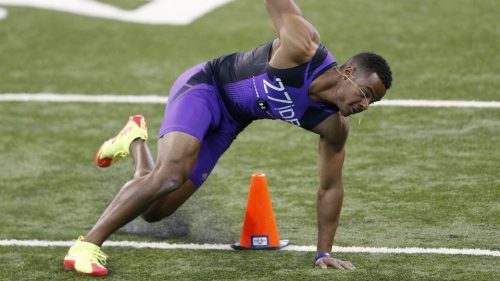
Basketball requires frequent changes in direction, such as cutting to the basket, defending opponents, or evading defenders. Agility training helps improve the ability to decelerate, change direction rapidly, and accelerate again, enhancing agility on the court.
Agility training also enhances reaction time, allowing players to respond more swiftly to opponents’ movements, passes, or changes in play.
On top of that, agility training helps develop foot speed, coordination, and precision, leading to better footwork on the court.
There are a lot of different drills you can do to enhance your agility, including ladder drills and cone drills. You can find all of them in our article on the best agility drills for basketball players.
Bulgarian Split Squats
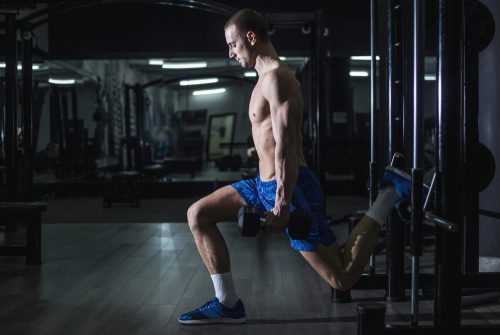
If you have clicked around this website very much you will quickly realize that we love Bulgarian split squats and think they are one of the best exercises there is for athletes of any kind.
Bulgarian split squats are great because they target one leg at a time, addressing muscle imbalances and promoting equal leg strength. This is crucial for explosive movements, stability, and injury prevention in basketball. By engaging in this exercise, players can improve their lower body strength, including the quadriceps, hamstrings, glutes, and calves. This leads to more power and stability during jumps, cuts, and changes of direction on the court.
Bulgarian split squats also improve stability and balance by challenging the core and lower body muscles. This helps players develop better body control, proprioception, and balance, which are essential for executing precise footwork and maintaining stability during challenging movements.
Additionally, Bulgarian split squats closely resemble the lunge position used in basketball (which we talked about earlier), making them highly relevant to the sport. By strengthening the muscles involved in this specific movement, players can enhance their performance in actions like driving to the basket, defending, and maintaining a low defensive stance.
How to Perform the Bulgarians Split Squat:
- Stand facing away from a bench or elevated platform, with one foot resting on top of it, shoelaces down.
- Take a step forward with your other foot, creating a comfortable distance between your feet.
- Keep your torso upright, engage your core, and maintain proper posture throughout the exercise.
- Lower your body by bending your front knee and descending into a lunge position. Ensure that your knee remains in line with your toes, and your back knee hovers just above the ground.
- Pause briefly at the bottom of the movement, then push through your front heel to return to the starting position.
- Perform the desired number of reps with each leg.
Deadlifts
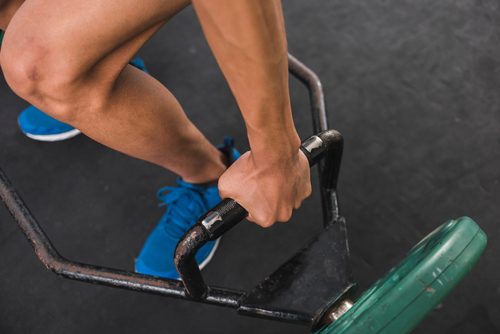
Deadlifts are another great exercises that all athletes should be doing. This compound movement targets multiple muscle groups simultaneously and offers a range of benefits. By incorporating deadlifts into their regimen, basketball players can develop total body strength, which is essential for various aspects of the game, including explosive movements, jumping, and physicality.
One of the primary advantages of deadlifts is their ability to enhance power and explosiveness. The exercise requires generating force from the ground up, engaging the glutes, hamstrings, lower back, quads, and core. This promotes full-body coordination and explosive hip extension, translating into improved power output on the court. By performing deadlifts, players can generate more force during jumps, accelerations, and changes of direction, giving them a competitive edge.
Furthermore, deadlifts replicate functional movement patterns commonly seen in basketball. The bending, lifting, and hip-hinging motions involved in deadlifts closely mimic actions performed on the court, enabling players to improve their efficiency and strength in these functional movements. By training these movement patterns, players can enhance their performance during gameplay and increase their on-court effectiveness.
There are many forms of deadlifts out there, but we like the trap bar deadlift the best for athletes;
How To Perform The Deadlift
- Stand in the center of the trap bar with your feet shoulder-width apart.
- Position your feet so that the barbell is aligned with the middle of your feet.
- Bend your knees and hinge at the hips to lower your torso.
- Reach down and grip the handles of the trap bar with a neutral grip (palms facing each other).
- Keep your back straight, chest lifted, and core engaged.
- Take a deep breath and brace your core.
- Drive through your heels and extend your hips and knees simultaneously to lift the bar off the ground.
- Keep your back straight throughout the movement, avoiding any rounding or excessive arching.
- Stand tall with the barbell, fully extending your hips and knees.
- Repeat for the desired number of reps
Suicide Sprints
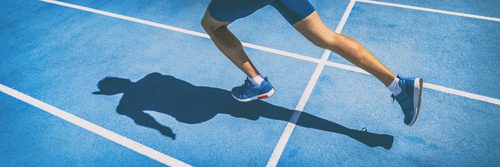
I’m sure you will all be thrilled to see suicide sprints on the list. What basketball player doesn’t love doing suicides?
While they are very unpopular with players, suicides offer several advantages that can directly translate to improved performance on the court. Firstly, suicide sprints help enhance cardiovascular endurance. Basketball is a fast-paced sport that requires players to constantly move up and down the court. Doing suicide sprints helps athletes build the stamina needed to sustain their energy throughout an entire game so you can finish strong and perform in the end when it matters most./
Moreover, suicide sprints develop speed, agility, and quickness, which are crucial attributes for basketball players. These sprints involve rapid changes of direction, mimicking the sharp movements often required during games, such as defending, driving to the basket, or reacting to opponents. By regularly incorporating suicide sprints into their training routine, players can improve their ability to accelerate, decelerate, and change direction rapidly, giving them a competitive edge.
Additionally, suicide sprints contribute to mental toughness and resilience. The demanding nature of this exercise pushes athletes out of their comfort zones, forcing them to dig deep and persevere. Basketball is a mentally challenging sport, and the ability to stay focused, push through fatigue, and maintain a competitive mindset is crucial. Suicide sprints provide an opportunity to develop mental toughness and instill a winning mentality. If you can handle running suicides, you probably shouldn’t be on the court in crunch time.
How to Perform Suicide Sprints:
- Start at a designated starting point, such as the baseline of a basketball court or a marked spot on the ground.
- Sprint as fast as you can towards a specific point, such as the free-throw line or a designated marker.
- Touch the line or marker with your hand or foot and immediately change direction.
- Sprint back to the starting point as quickly as possible.
- Once you reach the starting point, immediately sprint towards the next designated point or marker, which is typically farther away, such as the half-court line or another predetermined spot.
- Touch the line or marker and change direction to sprint back to the starting point again.
- Repeat this pattern, sprinting to different points or markers with each repetition.
Final Word
There you have the 10 best exercises for basketball players. Keep in mind, these exercises are just for strength and performance. You will need some actual basketball skills to go along with these exercises, or you won’t be very good. But if you have a solid game, then adding these exercises can make you a more powerful and explosive player than you would typically be.

